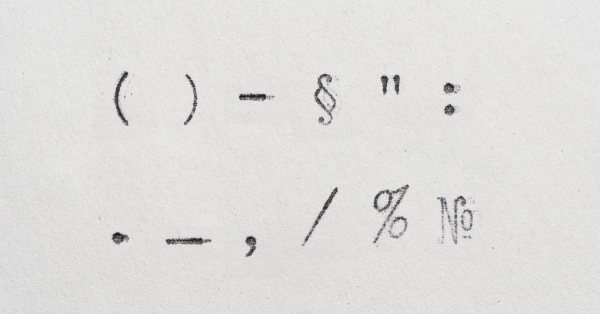
The Em Dash Witch Hunt: How Punctuation Became the New Turing Test
The term “ChatGPT hyphen” has been popularized in part through the LuxeGen Podcast, a popular culture show targeting younger Millennials and Gen Zs, which covered a rebrand post on Instagram by fashion brand Pretty Little Thing, on which the most-liked comment read: “including the ChatGPT hyphen is insane.” The post, indeed, featured said “hyphen,” and it has since been deleted from Pretty Little Thing’s Instagram profile.
But what is the “ChatGPT hyphen” referring to? It’s the em dash (—), and it’s become something of a scapegoat for AI writing.
As a quick lesson, there are three types of commonly used dashes in English writing. A hyphen (-) is most often used to create compound modifiers like “a well-loved dog” and “my mother-in-law.” An en dash (–) looks similar but is slightly longer than a hyphen and used more specifically between dates or page numbers to indicate a range. The em dash (—), on the other hand, can act more like a comma, colon, or parenthesis, indicating a sudden change in sentence structure, the addition of supplemental information, or an expanded clause.
If you’ve used AI tools like ChatGPT, Gemini, Claude, and Grok, you’ve probably noticed that AI likes the em dash—at times, perhaps a little too much. As such, the appearance of an em dash has been increasingly used as a justification that AI wrote something, rather than a human being.
For most people, grammar is a chore. Proper grammar is reserved for nerds, especially amid today’s slang and the general colloquialization of language. But for me and most others who have built their careers around writing, it’s religion. That’s why I’d like to set the record straight about why AI seems to love the em dash and the dangers of letting mass-public cherry-picking control the narrative around what is human and what is artificial.

Photo created by Jordan Tyler using DALL-E
Have We Created a Monster?
Many professionals use AI as a tool—part of an iterative process for brainstorming, refining, and researching—while maintaining creative control and adding valuable human insight that machines can’t yet recreate.
If we think back to the way AI learns, it’s through the existing body of knowledge we’ve fed it over the years. AI learned to write in part by studying the work of expert human writers, who naturally use em dashes for emphasis, flow, and style. But today, the same experts who taught AI all about the poor em dash are now becoming victims of circumstance.
The irony is that while we’re busy playing punctuation police, we’re essentially creating our own flawed Turing test.
The original Turing test, initially dubbed “the imitation game” by Alan Turing in 1950, involved an evaluator (a human one) who would judge two pieces of writing: one written by a human and one by a machine. Looking at the two in tandem, the evaluator would then try to identify which piece was written by the machine. If the evaluator can’t tell the two apart, the machine wins (or “passes”) the Turing test, thereby demonstrating its ability to simulate human-like responses.
In the case of the em dash witch hunt, we’re now saying writing that contains certain stylistic markers must be artificial. This reverse-engineering of the Turing test is convenient, sure, but it’s just as problematic as the original—reducing the complex question of humanity or machine mimicry to surface-level pattern recognition.
Trust me, I get it. Em dashes are obvious, and people are lazy. We’d rather point to punctuation to make our case against AI writing, rather than pointing to more substantial indicators. I’m in no way denying that AI can get overzealous in its use of the em dash. What I am saying is this: obsessing over punctuation is a huge oversimplification of our new, AI-assisted reality.
The Real Risks with AI Writing
Instead of fixating on em dash overuse, we should be focusing on the more egregious deceptions and the consequences they pose for people and professionals. For example, AI’s ability to hallucinate and tendency to overgeneralize present more genuine dangers than a piece of punctuation.
AI has been shown to confidently present non-existent data, fabricated editorial, and even fictional quotes from “experts.” In 2023, a lawyer was caught fabricating quotes and citations, which he had generated using ChatGPT, in official court proceedings. When this came to light, the case was dismissed, the lawyer faced a $5,000 fine, and the American Bar Association issued its first guidance on the use of generative AI tools by attorneys. This goes to show that, especially in a professional setting, false positives from AI can derail strategies, misguide arguments, damage credibility, and undermine an individual’s or organization’s integrity.
But there are also personal risks. When we lean too heavily on AI writing, we run the risk of forfeiting our own creativity. When we all rely on the same AI models to write, think, and work, our perspectives and voices run the risk of becoming homogenized and unoriginal. Further, when AI is used as a crutch for writing rather than a tool, creatives can lose the same skills that once made them so valuable.
From the dangers of hallucination to the death of ingenuity and atrophied critical thinking skills, relying on AI too heavily is a slippery slope between helpful and handicapping. Whether it’s through an Instagram post, a blog, or a magazine article, relying too heavily on AI can—and often will—lead to sweeping generalizations, a lack of original insight, and the absence of expert wisdom gained over years of real experience. All these run the risk of misleading readers and causing real harm to trust, truth, and the way we communicate.

Photo by spaxiax (Getty Images)
Substance Over Syntax
This isn’t about man versus machine. It’s about skilled professionals who know when and how to leverage AI, versus those who either fear it completely or rely on it blindly.
Don't let the em dash hysteria fool you. The real differentiator isn't punctuation—it's expertise. When you need strategic storytelling, formulating, or expert counsel that moves your business forward, work with professionals who bring both cutting-edge tools and battle-tested wisdom to the table. The best experts will know where to draw the line—after all, they’re who AI learned from in the first place.
Follow us on LinkedIn for the latest updates on all things happening here at BSM Partners.
About the Author
Jordan Tyler is the Director of Media at BSM Partners and co-host of the Barking Mad podcast. She has more than five years of experience reporting on trends, best practices and developments in the North American pet nutrition industry. Jordan resides in Bentonville, Arkansas, with her husband and their four furry family members.
This content is the property of BSM Partners. Reproduction or retransmission or repurposing of any portion of this content is expressly prohibited without the approval of BSM Partners and is governed by the terms and conditions explained here.